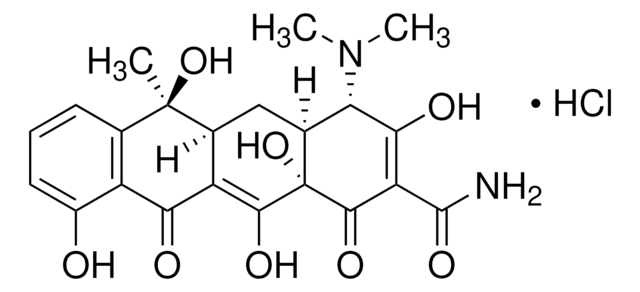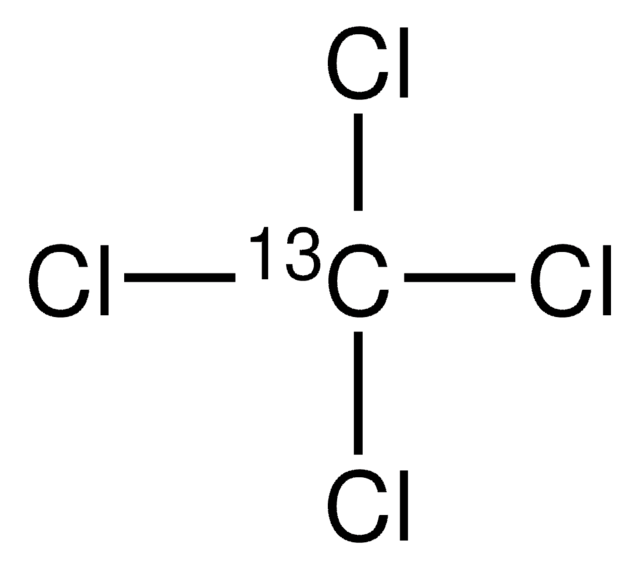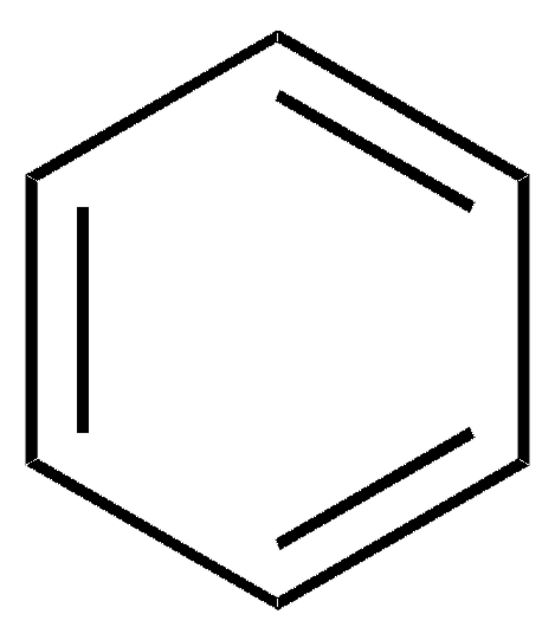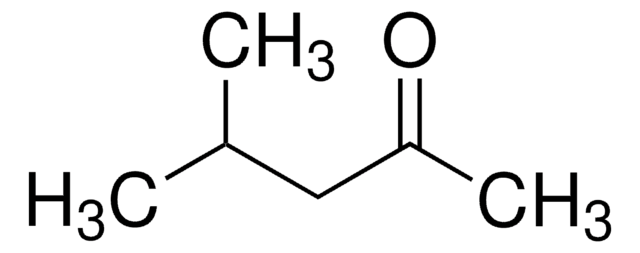270652
Carbon tetrachloride
suitable for HPLC, ≥99.9%
Sinónimos:
Tetrachloromethane
About This Item
Productos recomendados
densidad de vapor
5.32 (vs air)
presión de vapor
143 mmHg ( 30 °C)
91 mmHg ( 20 °C)
Análisis
≥99.9%
formulario
liquid
purificado por
glass distillation
disponibilidad
not available in EU
técnicas
HPLC: suitable
impurezas
≤0.01% water
residuo de evap.
<0.0004%
índice de refracción
n20/D 1.460 (lit.)
bp
76-77 °C (lit.)
mp
−23 °C (lit.)
densidad
1.594 g/mL at 25 °C (lit.)
λ
H2O reference
Absorción UV
λ: 265 nm Amax: 1.0
λ: 270 nm Amax: 0.30
λ: 280 nm Amax: 0.07
λ: 290 nm Amax: 0.02
λ: 300-400 nm Amax: 0.01
aplicaciones
food and beverages
cadena SMILES
ClC(Cl)(Cl)Cl
InChI
1S/CCl4/c2-1(3,4)5
Clave InChI
VZGDMQKNWNREIO-UHFFFAOYSA-N
¿Está buscando productos similares? Visita Guía de comparación de productos
Descripción general
Please view www.aldrich.com/epaods regarding the EPA?s request for application information of Ozone Depleting Substances.
Aplicación
Palabra de señalización
Danger
Frases de peligro
Consejos de prudencia
Clasificaciones de peligro
Acute Tox. 3 Dermal - Acute Tox. 3 Inhalation - Acute Tox. 3 Oral - Aquatic Chronic 3 - Carc. 2 - Ozone 1 - Skin Sens. 1B - STOT RE 1 Inhalation
Órganos de actuación
Liver,Kidney
Código de clase de almacenamiento
6.1B - Non-combustible acute toxic Cat. 1 and 2 / very toxic hazardous materials
Clase de riesgo para el agua (WGK)
WGK 3
Punto de inflamabilidad (°F)
Not applicable
Punto de inflamabilidad (°C)
Not applicable
Certificados de análisis (COA)
Busque Certificados de análisis (COA) introduciendo el número de lote del producto. Los números de lote se encuentran en la etiqueta del producto después de las palabras «Lot» o «Batch»
¿Ya tiene este producto?
Encuentre la documentación para los productos que ha comprado recientemente en la Biblioteca de documentos.
Los clientes también vieron
Nuestro equipo de científicos tiene experiencia en todas las áreas de investigación: Ciencias de la vida, Ciencia de los materiales, Síntesis química, Cromatografía, Analítica y muchas otras.
Póngase en contacto con el Servicio técnico









